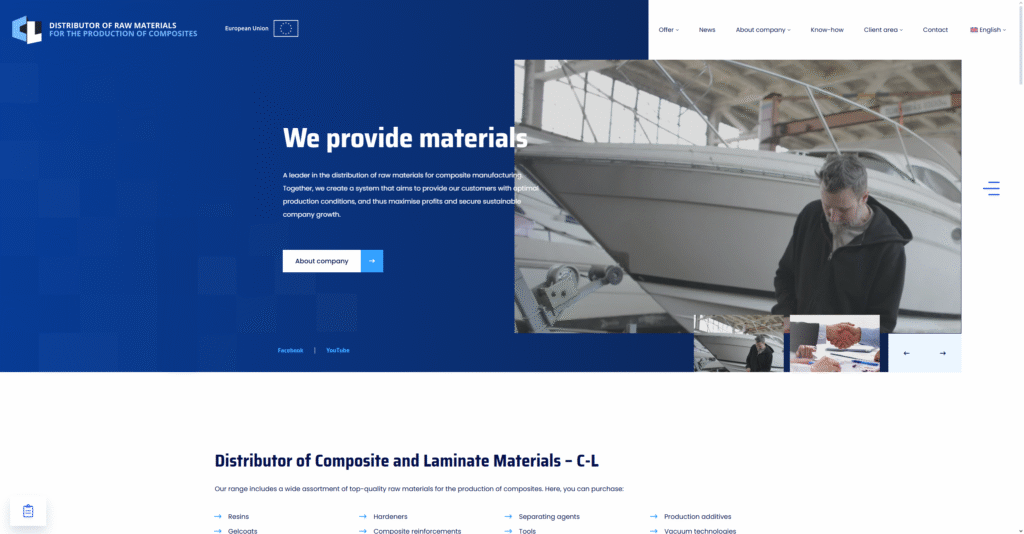Polymer composites are materials that have revolutionized numerous industrial sectors over the past few decades. By combining low weight with high strength and resistance to external factors, they are becoming an increasingly popular alternative to steel and aluminum. But where are they used most often—and why is their role in the economy continuing to grow?
Polymer composites – what are they and why are they gaining importance?
Polymer composites are materials made of a polymer matrix reinforced with fibers—typically glass, carbon, or aramid. This combination produces a material that is lightweight yet incredibly durable. Compared to metals, they also offer excellent corrosion resistance, which helps reduce maintenance and operational costs.
A key advantage is their adaptability. Their properties can be tailored to meet the specific requirements of a given application—from stiffness to thermal resistance. This design flexibility makes them particularly attractive to modern industry.
Need custom properties? Find the perfect polymer composites and full technological support at C-L. Send an inquiry.
Use of polymer composites in the automotive industry
The automotive sector has long recognized the potential of composites. Lightweight body panels and interior components significantly reduce vehicle weight, which in turn lowers fuel consumption and emissions. In sports cars, composites are also used for their ability to withstand high dynamic loads.
Polymer composites in aerospace and space industries
In aviation, weight reduction is a top priority. Polymer composites now account for up to half the structural mass of modern passenger aircraft. Their use spans components such as wings, fuselage sections, and cabin interiors.
A similar trend can be observed in space exploration, where every gram counts. Composites offer a perfect balance of lightness and reliability under extreme conditions, making them indispensable in spacecraft design.
Applications in construction and infrastructure
The construction industry is increasingly adopting polymer composites. They are used in the production of bridges, walkways, and structural elements that must resist corrosion and withstand harsh weather conditions. Compared to traditional materials, their lighter weight also makes installation easier and more cost-effective.
Composites are also becoming more popular in architectural design—used for facades, window frames, and decorative features. They enable the creation of durable, modern solutions without overloading the supporting structure.
Other industries benefiting from composite materials
- Wind energy – turbine blades made from polymer composites are lightweight and strong enough to handle significant stress.
- Sports and recreation – tennis rackets, bicycles, and helmets gain durability and ergonomics from composite construction.
- Medical field – implants, prosthetics, and diagnostic devices are increasingly manufactured using composites, improving patient comfort and performance.
As we can see, the use of these materials extends far beyond heavy industry and into everyday life.
The future of polymer composites – innovation on the rise
Advances in manufacturing technology are making polymer composites more affordable than ever. Increasing attention is also being paid to their recyclability—an important factor from a sustainability perspective. In the coming years, we can expect to see broader use in public transport, renewable energy, and green construction.
Why choose composites?
Polymer composites combine lightness, durability, and resistance to environmental factors. From cars and aircraft to bridges and sporting goods, their applications are expanding rapidly. These materials drive innovation, reduce costs, and align with the global shift toward sustainability. If your company is seeking next-generation solutions, adopting composite technologies is a step worth taking.






